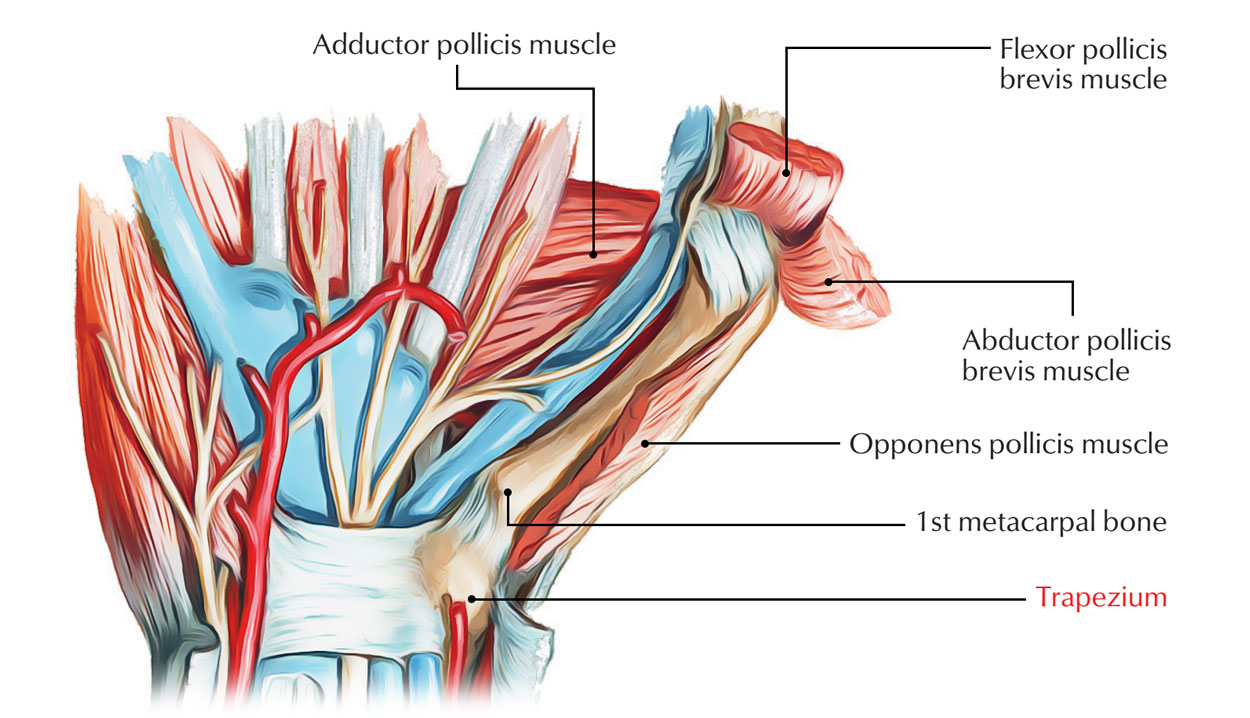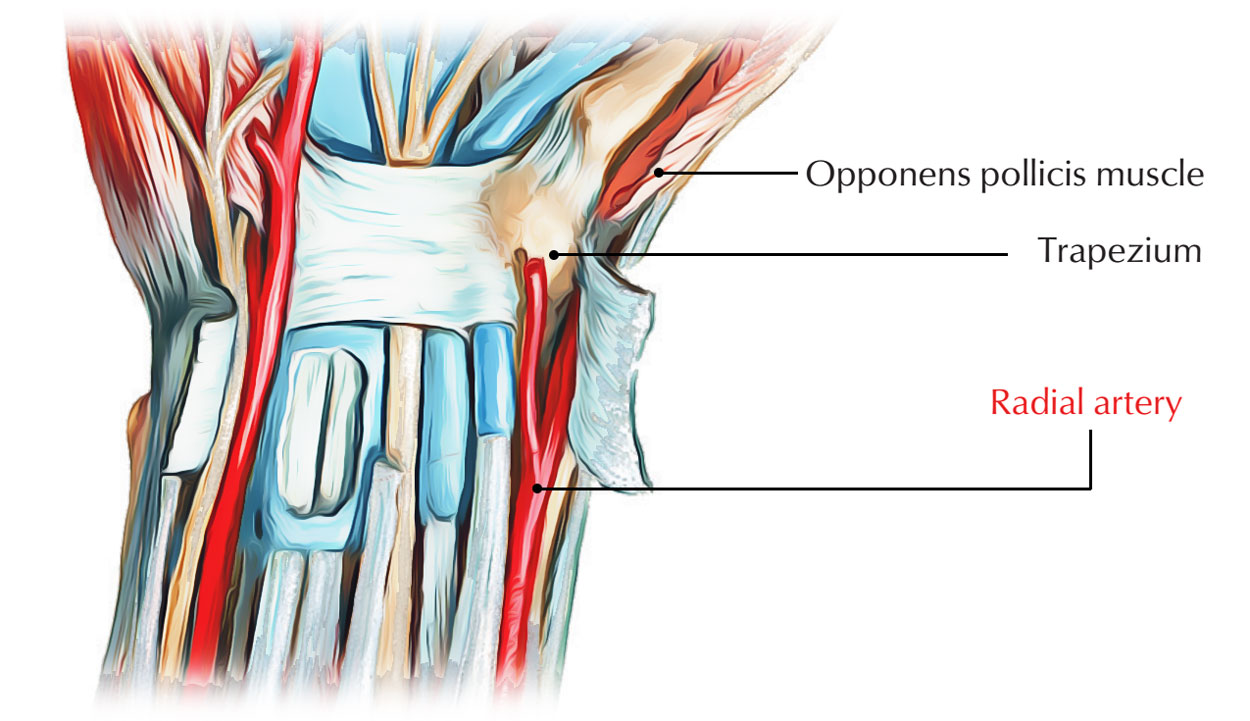The trapezium is the outmost of the second row of carpal bones. When seen in its dorsal or palmar part it shows a rhombic type; however much open and cropped with the lower angle.
Structure

Trapezium
- Among the four protuberances that provide connection to the anterior annular ligament, its anterior surface is differentiable by a vertical notch passed through by the tendon of the flexor carpi radialis muscle and external to the groove by a rim.
- On the internal aspects of the rhomb, meantime a small part on the noticeable lower angle is for the second metacarpal bone, the superior connects with the scaphoid and the inferior with the trapezoid.
- The inferior provides a smooth surface on the external aspects and the superior is free, convex through behind forwards, and concave through without inwards, and is differentiated by a small interval through the side for the second metacarpal bone that articulates with the metacarpal bone of the thumb.
- The trapezium joins with four bones, the scaphoid, trapezoid, and first and second metacarpals.
Articulations
- joins with the scaphoid at the midcarpal joint
- joins with the trapezoid at its intercarpal joint
- joins with the thumb metacarpal at the carpometacarpal joint of the thumb
Connections
Muscle & Tendons

Muscles attached to Trapezium
- superficial head of flexor pollicis brevis emerges distally via the tubercle
- the opponens pollicis emerges in between flexor pollicis brevis and abductor pollicis brevis via the tubercle
- the abductor pollicis brevis emerges via the tubercle proximally
Ligamentous
- two layers of the flexor retinaculum connect both aspect of the groove of the trapezium
- radial collateral ligament connects to the lateral surface
- capsule of the carpometacarpal joint of the thumb connects to the lateral surface
Relations
The tendon of flexor carpi radialis go through the groove and the radial artery is precisely related to the dorsal surface.
Blood supply

Blood Supply of Trapezium
Provided by distal branches of the radial artery, mainly through the dorsal surface
Clinical Significance
- The majority of activities that include holding or squeezing are possible due to the thumb’s amazing variety of movement.
- However where the thumb connects the trapezium bone in the wrist, an increased danger of osteoarthritis in the first carpometacarpal (CMC) joint.
- Occasionally the joint ends up being so harmed that surgery is essential.
- Issues commonly begin whenever the thick ligaments that support the joint collectively loosen up, enabling it to slip out of location.
- In time, the articular cartilage that supports the ends of the bones deteriorates, triggering pain and restricting activity.
- Rheumatoid arthritis (RA) and other types of inflammatory arthritis can likewise harm the first CMC joint – likewise called the trapeziometacarpal joint (TMC).
x

 (57 votes, average: 4.64 out of 5)
(57 votes, average: 4.64 out of 5)